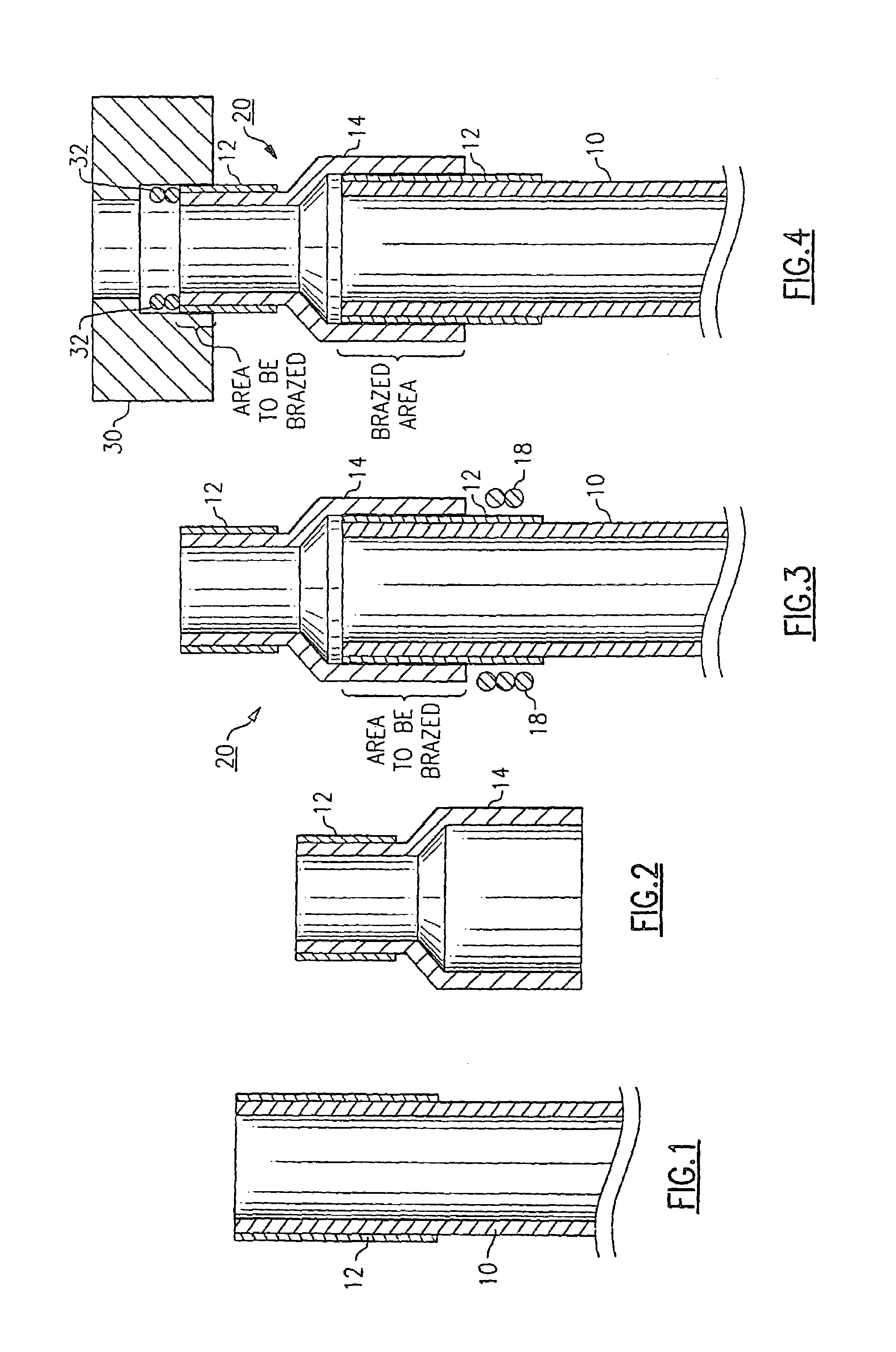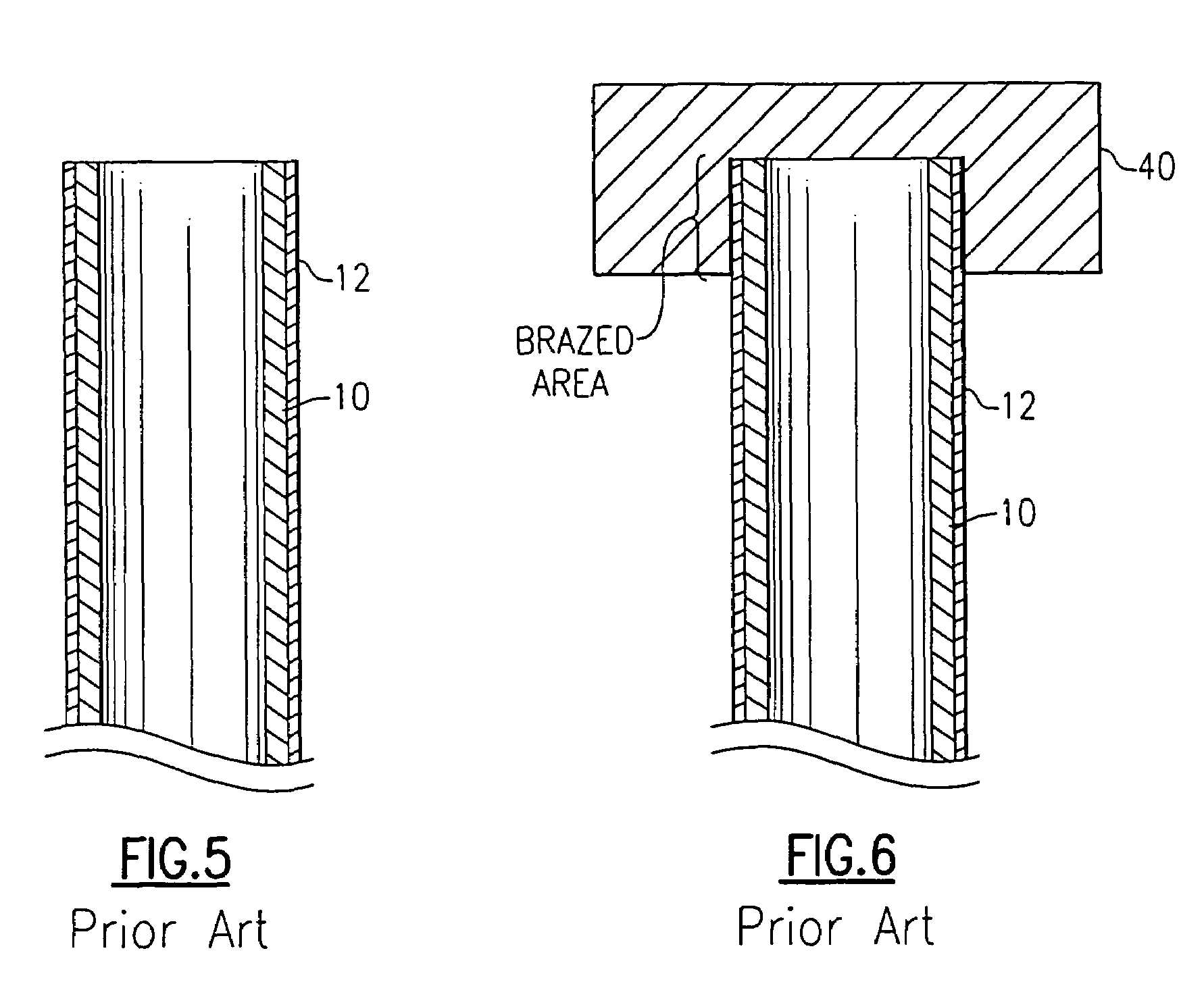Two tier brazing for joining copper tubes to manifolds
a technology of copper alloy tubes and manifolds, which is applied in the direction of manufacturing tools, solvents, etc., can solve the problems of changing the microstructure of copper, the inability to terminate the braze cycle, and the alloying and erosion of the conventional method of furnace brazing copper tubes directly to metal manifolds in vacuum braze furnaces, etc., to achieve efficient joining and facilitate the joining of copper tubes
- Summary
- Abstract
- Description
- Claims
- Application Information
AI Technical Summary
Benefits of technology
Problems solved by technology
Method used
Image
Examples
Embodiment Construction
[0024]The process of the present invention provides significant improvement over the conventional technique described in FIGS. 5 and 6 of the drawings. Conventional methods involve providing a copper or copper alloy tube 10 and plating or coating the entire length of the tube with the noble metal 12. The coated or plated copper tube is then brazed directly to a manifold 40 as illustrated in FIG. 6. Typical problems associated with this technique occur where the plating over the entire surface of the copper tube is not uniform. When this occurs, a high risk of failure results due to imperfections in the plating or coating surface resulting in the brazing material alloying with the copper tube and deleteriously effecting the mechanical and physical properties of the copper tubes. Through the use of the present invention, the ferrule part of the copper tube-ferrule assembly can be brazed effectively to a compatible alloy or metal of the manifold, and therefore avoid the problems associ...
PUM
| Property | Measurement | Unit |
|---|---|---|
| time | aaaaa | aaaaa |
| melting temperature | aaaaa | aaaaa |
| temperature | aaaaa | aaaaa |
Abstract
Description
Claims
Application Information
 Login to View More
Login to View More - R&D
- Intellectual Property
- Life Sciences
- Materials
- Tech Scout
- Unparalleled Data Quality
- Higher Quality Content
- 60% Fewer Hallucinations
Browse by: Latest US Patents, China's latest patents, Technical Efficacy Thesaurus, Application Domain, Technology Topic, Popular Technical Reports.
© 2025 PatSnap. All rights reserved.Legal|Privacy policy|Modern Slavery Act Transparency Statement|Sitemap|About US| Contact US: help@patsnap.com



